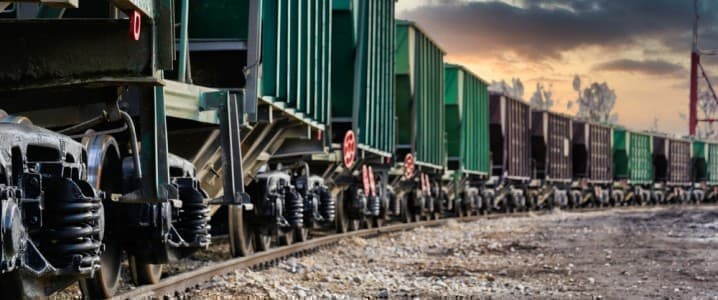Last year was a strong one for green hydrogen—at least in terms of media attention. Actual green hydrogen production did not change in any meaningful way, and there’s a host of reasons for that—not the least of which is cost. And yet, not all is lost for green hydrogen and not just because the EU is set on building 40 GW of production capacity, whatever the cost.
It’s because of trains. France’s Alstom first showcased its hydrogen fuel cell-powered train Coradia iLint back in 2016. Two years later, the first iLint train began operations in Germany. Last year, Alstom said that from next year, it will be launching 14 iLint trains to replace diesel-run trains.
Now, Alstom does not say anywhere that the hydrogen it uses in the fuel cells of its iLint trains is green. But the fact that hydrogen trains are already in operation provides a glimmer of hope that even green hydrogen production will someday become commercially viable outside of optimistic forecasts by various energy consultancies.
Railway transport appears to be the perfect testing ground for hydrogen technology, per a recent report by the Wall Street Journal. According to a report by Roland Berger, the WSJ’s Rochelle Toplensky wrote this week, the total lifetime cost of ownership for Alstom’s hydrogen trains is already comparable with that of trains running on diesel or electricity. Again, the report does not specifically focus on green hydrogen, but it’s a start.
Hydrogen faces a few substantial obstacles to joining the mainstream fuel flow, with cost chief among them, followed by a lack of infrastructure. As the WSJ’s Toplensky aptly puts it, this is a classic egg-or-chicken problem. It is very clearly visible in the hydrogen car industry.
There are few hydrogen passenger car models, and despite their attractive characteristics, they remain unpopular, first because of the higher price and then because of the absence of a well-developed filling station network. If this sounds familiar, it’s because EVs have the same problem. But while the Biden administration in the U.S. and the European Union across the Atlantic are taking care of that with plans for building such networks, hydrogen is more or less on its own.
Related: Colombia’s Oil Industry Is On The Brink Of Collapse
The need for stations is another reason why railway transport is the perfect testing—and adoption—ground for hydrogen fuel cells. Trains don’t need to fill up every two stations. They need several strategically placed filling stations.
“We want to focus on the big industrial bases and mobility corridors in order to build the infrastructure. Trains are a good base load and a good target for us,” the WSJ’s Toplensky quotes the Vice President of Air Liquide, the French industrial gases major, as saying. “We know when they start and arrive, go from point A to B, and the frequency. It is way easier to develop infrastructure for trains than for trucks.”
Electric trains are great for the environment, but they are not exactly the cheapest form of transportation. Without help from governments, electric trains would arguably go into oblivion under pressure from market forces. But hydrogen trains are cheaper than electric ones. This is one place where hydrogen fuel cell technology appears to be ready to shine and possibly incite more investor interest in hydrogen technology applicable to other segments of the transport sector at some point.
How long until green hydrogen becomes viable even for trains is difficult to say. The technology needs some major scaling—and much higher carbon prices—to even begin approaching the costs of blue or grey hydrogen. Yet green hydrogen is the endpoint in the hydrogen evolution, not the first step. The first step is finding a place where hydrogen can shine, and it seems that railway transport has found this place.
By Irina Slav for Oilprice.com
More Top Reads From Oilprice.com:
- Russia Is Making A Mad Dash To Outrun Peak Oil Demand
- OPEC’s Oil Exports Are Surging By 1 Million Bpd In May
- Is This One Of The Best Ways To Play The Electric Vehicle Boom?



















Buses in Reykjavic can fuel for a whole day’s rounds of their small capital city in seven minutes exactly. During a visit to Iceland in 2008, I witnessed the fuelling process myself in the company of Professor Bragi Arnason, whom Newsweek Magazine nicknamed ‘Professor Hydrogen for his work and research to convert Iceland into a hydrogen economy. Moreover, the hydrogen fuelling station was part of a gasoline station.
By virtue of their size, trains could have the capacity to carry on board all their needs for a day’s travel. Moreover, fuelling facilities can be built on selective stations to reduce the cost of infrastructure.
Dr Mamdouh G Salameh
International Oil Economist
Visiting Professor of Energy Economics at ESCP Europe Business School, London
For the moment I believe Class 8 trucks are the only in fact used form of transiting liquified hydrogen in order to power a fuel cell vehicle fleet commercially. I'm not sure how this works as fuel for rocket launch however not that that is needed for the time being. If true this would be great news for the US trucking Industry as what has been almost exclusively reserved for as a "Government only fuel" becomes open to commercial service. It is odd that Florida has no liquid hydrogen fueling stations beyond what has existed at Cape Canaveral for many decades now.